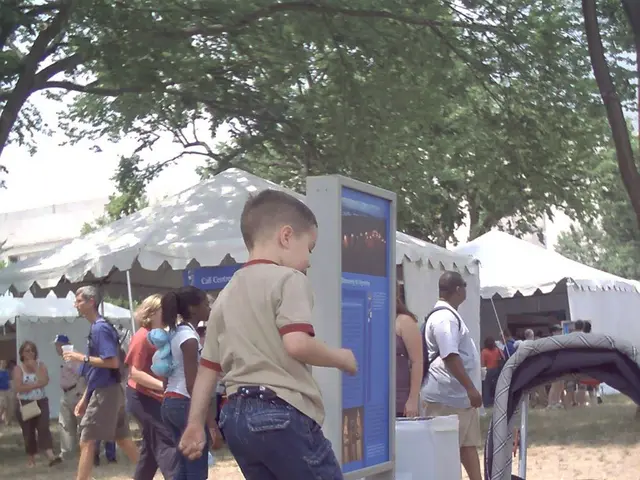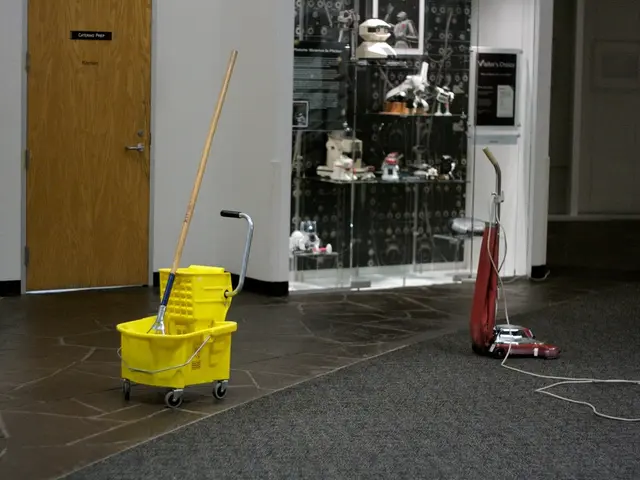California town maintains highest rental expenses nationwide for the third consecutive year
In a significant move to address the ongoing housing affordability crisis, California has implemented a comprehensive approach that combines legislative reforms, targeted investments, zoning modernization, and institutional innovation. This strategy aims to boost housing production, streamline approvals, and increase affordable housing support, not just statewide, but also in high-need areas like Santa Cruz County.
According to the National Low-Income Housing Coalition's 2025 Out of Reach report, Santa Cruz, California, remains the most unaffordable rental market in the nation for the third year in a row. A full-time minimum-wage worker in Santa Cruz County would need to work 120 hours a week to afford the average two-bedroom apartment, and a renter in Santa Cruz must earn $168,920 a year to afford a modest two-bedroom at fair market rent.
Historic housing legislation signed in mid-2025, such as Assembly Bill 130 and Senate Bill 131, are key components of this strategy. These laws aim to streamline and modernize the California Environmental Quality Act (CEQA) review process for housing and infrastructure projects, reducing delays and costs. They also remove long-standing development barriers, promote infill housing, increase housing density in underutilized areas, and provide more certainty for builders, enabling faster construction of homes.
Significant budget investments under the 2025-26 Housing Affordability Package further support these efforts. For instance, $500 million is allocated for the Low-Income Housing Tax Credit Program to incentivize affordable rental housing, $120 million for the Multifamily Housing Program supporting the development of affordable apartments, and $300 million for the California Dream for All Program, providing down payment assistance for first-time homebuyers.
Changes to zoning and permitting are also crucial. Experts recommend adopting zoning reforms similar to cities like Minneapolis and Portland, which allow more and diverse housing types. Streamlined permitting processes help builders start projects more quickly and cost-effectively.
In addition, California’s first-ever standalone state housing agency was created in 2025, separating affordable housing responsibilities from unrelated regulatory functions. This institutional reform addresses systemic fragmentation and is aimed at a more effective response to the housing and homelessness crises.
Santa Cruz County, like other California counties, stands to benefit from these statewide reforms and investments. While detailed county-level programs are not explicitly outlined, these reforms are designed to support local efforts by easing regulatory constraints and increasing funding opportunities.
California's current solutions combine legislative reforms, targeted investments, zoning modernization, and institutional innovation to tackle housing affordability both broadly and in high-need areas such as Santa Cruz County. These efforts are aimed at reducing homelessness and increasing affordability statewide.
References: [1] California Legislative Information. (2025). Assembly Bill 130. Retrieved from https://leginfo.legislature.ca.gov/faces/billTextClient.xhtml?bill_id=202520260AB130
[2] California Legislative Information. (2025). Senate Bill 131. Retrieved from https://leginfo.legislature.ca.gov/faces/billTextClient.xhtml?bill_id=202520260SB131
[3] California Housing Partnership Corporation. (2025). 2025-26 Housing Affordability Package. Retrieved from https://www.calhousing.org/news/2025-26-housing-affordability-package
[4] Urban Land Institute. (2025). Zoning Reforms in Minneapolis and Portland: A Look at Their Impact. Retrieved from https://www.uli.org/content/zoning-reforms-minneapolis-and-portland-look-their-impact
[5] California Department of Housing and Community Development. (2025). California’s First-Ever Standalone State Housing Agency. Retrieved from https://www.hcd.ca.gov/news/press-releases/2025/californias-first-ever-standalone-state-housing-agency
- The 2025-26 Housing Affordability Package, a significant budget investment, includes funds for programs like the Low-Income Housing Tax Credit Program, aimed at incentivizing affordable rental housing.
- California's new standalone state housing agency, established in 2025, aims to address systemic fragmentation and streamline affordable housing responsibilities, not just statewide, but also in high-need areas like Santa Cruz County.
- California's strategy for addressing the housing affordability crisis includes investments in home-and-garden projects, such as down payment assistance for first-time homebuyers through the California Dream for All Program.
- To further boost housing production and increase affordable housing support, legislative reforms like Assembly Bill 130 and Senate Bill 131 aim to modernize the California Environmental Quality Act (CEQA) review process for housing and infrastructure projects, reducing delays and costs, and promoting infill housing within housing-market sectors.




